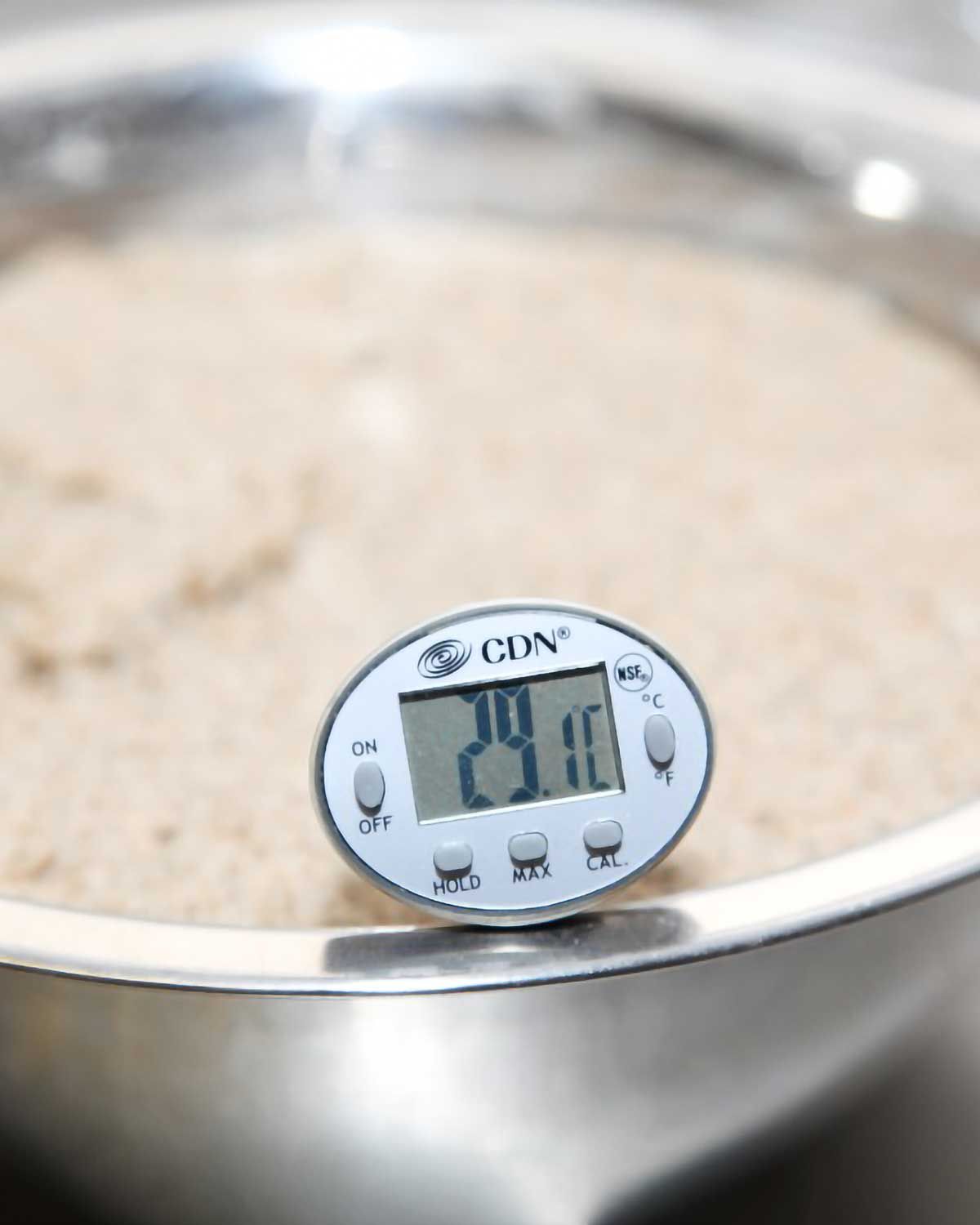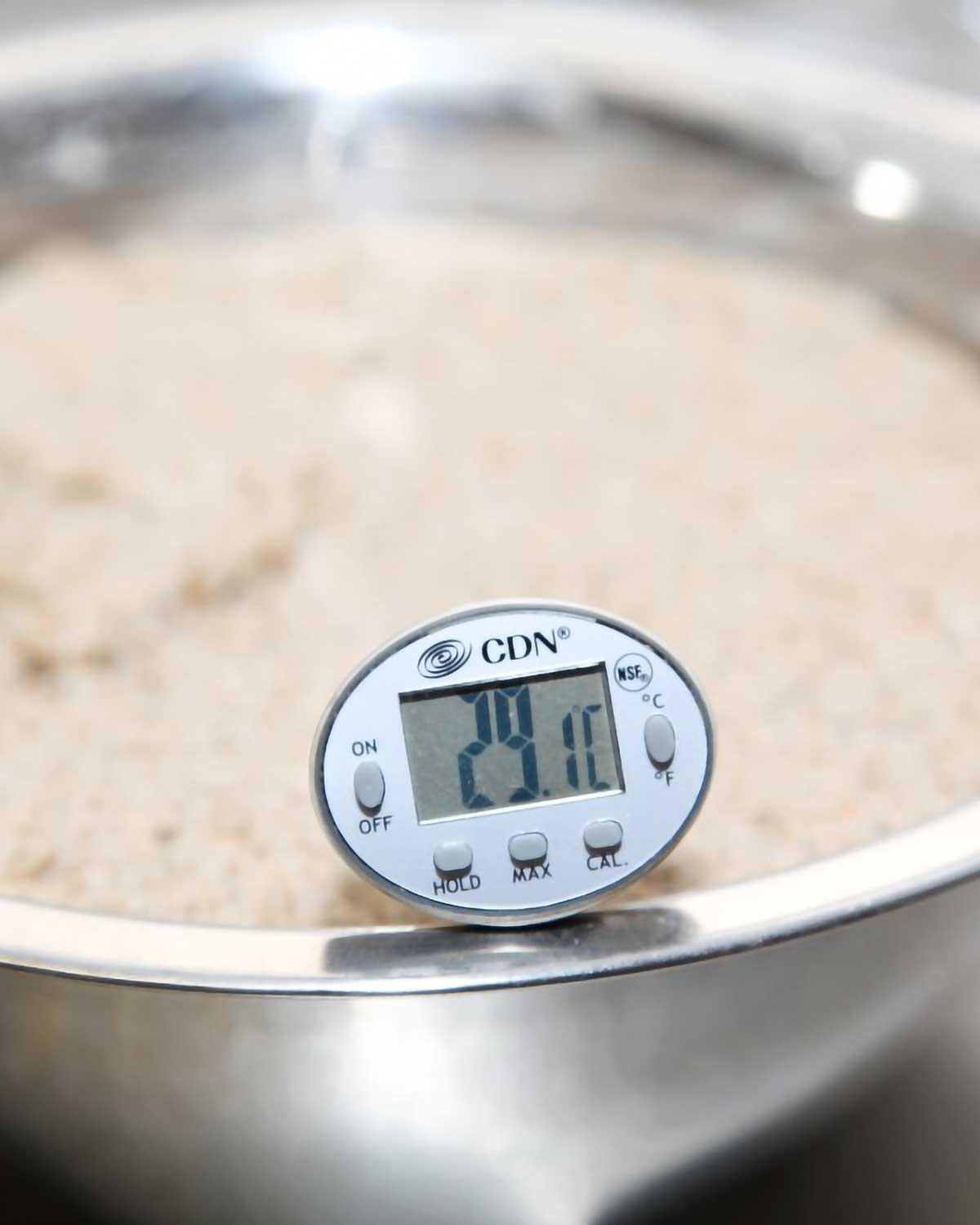
How to take (almost) all the guesswork out of making and baking bread? Leave as little to chance as possible. A digital thermometer helps you do exactly that.

If you’ve ever baked bread, then chances are you’ve struggled a little along the way. Some of the most common questions we hear from readers about baking bread—and there are many—pertain to the dough not rising or being too sticky, or the crust turning out too chewy, or the bread being undercooked. There’s a common factor behind each of these issues, and it has everything to do with temperature.
What’s the right temperature for water?
Curious as to why bread recipes sometimes specify the water be “warm” or perhaps even indicate a precise temperature—and if it even matters? Turns out it does matter. A lot.
If you use water that’s too hot (above 120°F or 49°C), you run the risk of harming or killing the yeast. Too cold (below 100°F or 38°C), and your yeast may be slow to foam and the dough that results would likely be sticky and difficult to handle. A range of 105 to 115°F (41 to 46°C) provides the optimum conditions in which active dry yeast can flourish which, in turn, ensures that your dough will rise. If you’re using fresh yeast, you’ll want to keep the water around 95°F (35°C), and if using instant yeast, it can withstand warmer temperatures of 120 to 130°F (49 to 55°C).
A digital thermometer will quickly and handily ensure your water is within the ideal temperature range. As an aside, our own experience in baking countless loaves of bread indicates that dough made with slightly cooler water resulted in a denser, more chewy crust, while warm water gave us a lighter, airier crust.
What’s the best temperature environment for dough to rise?
Once your dough is mixed, it needs a warm spot to rise, with a temperature between 80 and 90°F (27 and 32°C). If the air temperature is too cool, you’ll spend your day staring at a loaf of bread that refuses to rise. Too hot and it may rise too quickly and overproof, only to collapse in the oven. If your kitchen is on the cooler side, pop that bread into the oven with the light turned on and let it rise in there. Just remember to take it out before you preheat the oven for baking!
What temperature means dough is done?
After your dough has risen and it’s in the oven, there’s still guesswork if you’re not checking temperatures. And nothing is quite as disappointing as spending hours on a loaf of bread only to cut into it and discover the center is undercooked. A digital thermometer lets you easily assess the doneness of the loaf without any guesswork. You simply insert the probe into the loaf, just as you would with a roast chicken or pot roast. Most bread should remain in the oven until it reaches an internal temperature of 195° to 205°F (91° to 96°C), however, enriched doughs will be ready at 180° to 190°F (82° to 88°C).
All the critical temperatures you need to know
The following information, excerpted from The Inquisitive Cook, by Anne Gardiner and Sue Wilson, provides useful information on ideal temperatures when working with different types of yeast and the different stages of bread baking.
300°F to 400° F (150°C to 205°C): Surface temperature of a browning crust.
200°F (100°C): Interior temperature of a loaf of just-baked bread.
130°F to 140°F (55°C to 60°C): Yeast cells die (thermal death point).
120°F to 130°F (49°C to 55°C): Water temperature for activating yeast designed to be mixed with the dry ingredients (ie. instant yeast) in a recipe.
105°F to 115°F (41°C to 46°C): Temperature of water for dry yeast reconstituted with water and sugar.
100°F (38°C) or lower: When yeast is mixed with water at too low a temperature, an amino acid called glutathione leaks from the cell walls, making doughs sticky and hard to handle.
95°F (35°C): Temperature for liquids used to dissolve compressed yeasts, also known as fresh yeast or cake yeast.
80°F to 90°F (27°C to 32°C): Optimum temperature range for yeast to grow and the ideal temperature range for letting your dough rise.
70°F to 80°F (21°C to 27°C): Recommended water temperature if using a bread machine.
40°F (4°C): Recommended refrigerator temperature. Used directly from the fridge, fresh yeast is too cold to work properly. [Editor’s Note: In other words, we let yeast warm slightly rather than using it straight from the fridge.]
Which digital thermometer is best?
Depending on your budget, there are several great options available on the market. Whichever you choose, you want to make sure the display is clear and easy for you to read.
© 2021 Angie Zoobkoff. All rights reserved. All materials used with permission.


